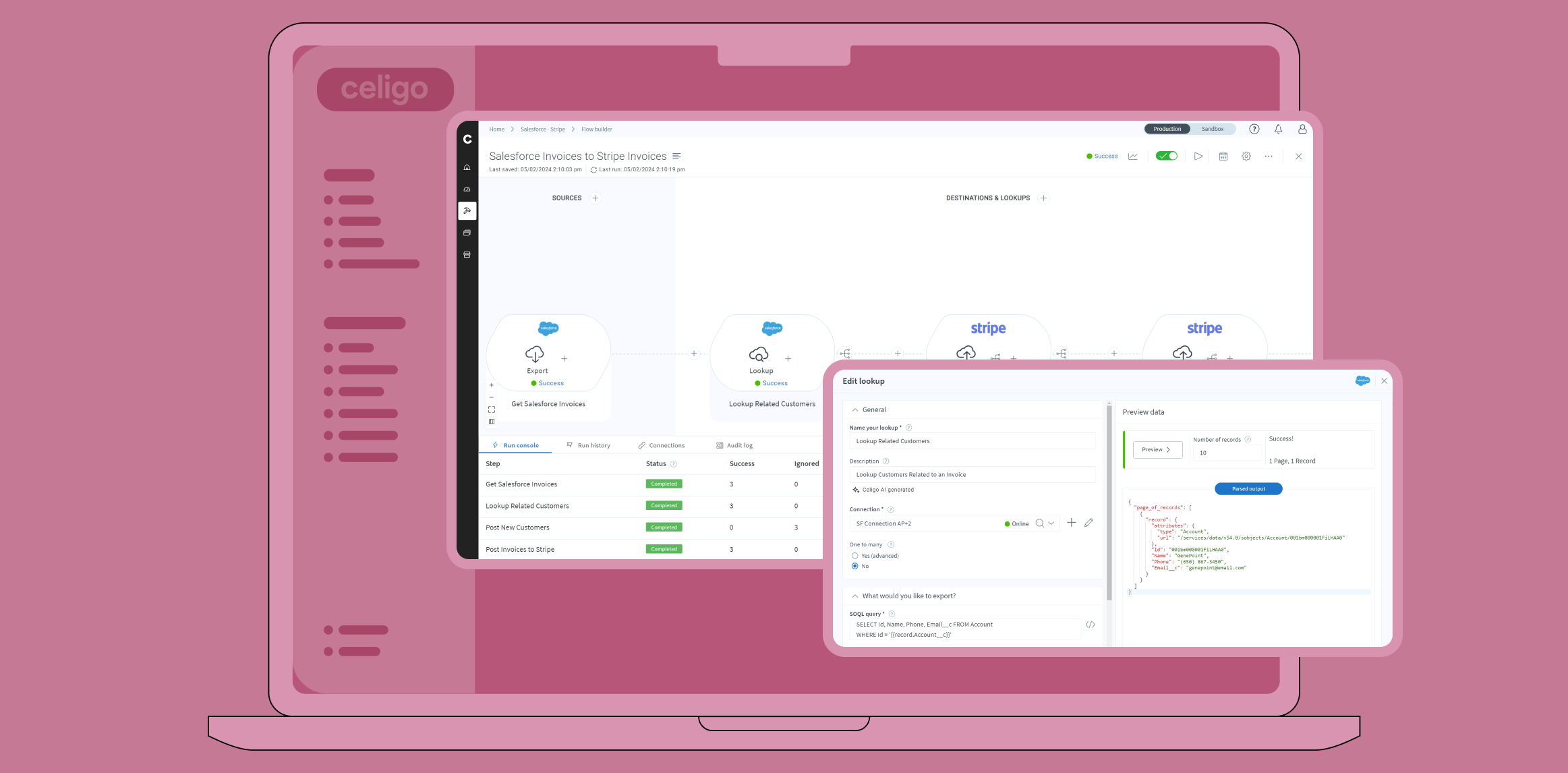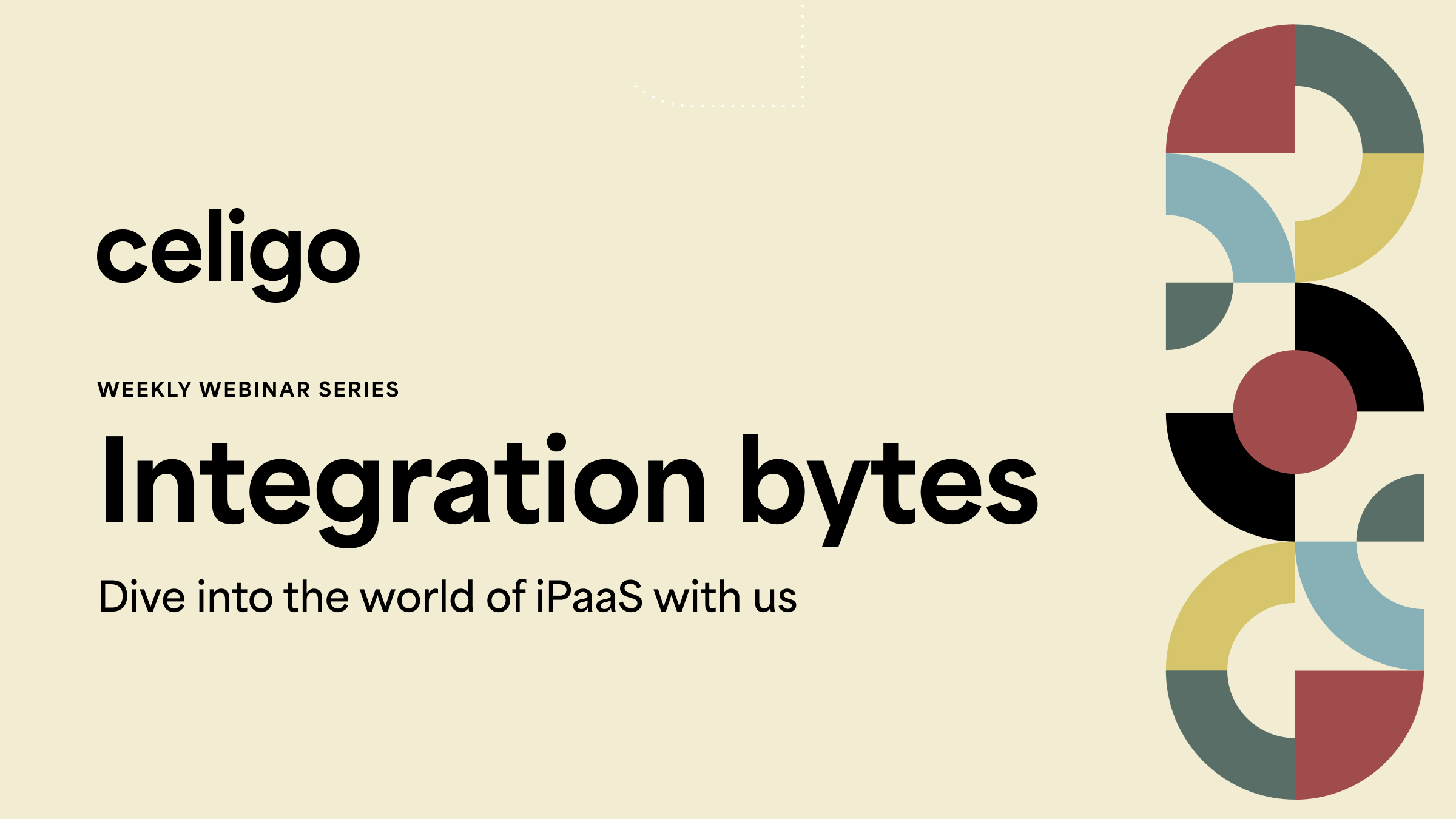Published Apr 15, 2024
Overcoming data challenges: How Celigo enhanced customer journeys

- Accurate, up-to-date data is crucial for scaling customer success processes.
- We leveraged our modern iPaaS to integrate our tech stack.
- By integrating, we can proactively address concerns and reduce churn.
Reliable, up-to-date customer data is one of the most valuable assets any organization possesses. However, as the number of applications required to do business grows, it becomes more and more difficult to get a comprehensive view of your data.
If you’re facing this problem, you’re not alone. To solve our customer data issues, we integrated our tech stack with the Celigo platform. This allowed us to bring our data into a central hub and uncover key insights about our customers.
Discover how we navigated our data challenge and improved onboarding success, enhanced the overall customer journey, and minimized churn.
The challenge
As Celigo began to scale, we realized our current customer data solution wasn’t up to par. It required manual and time-consuming tasks that caused our data to get stale quickly. This left our customer success managers (CSMs) without the information they needed to effectively address customers’ needs.
There were several projects we needed to tackle in order to gain the visibility and scalability our team required, so we chose to break down the process into six key steps.
Step 1: Integrating our CS platform
The first step on our journey was to adopt a customer success (CS) platform. This allowed us to see a quick snapshot of customer health, automate customer outreach, prioritize tasks, and simplify engagement tracking.
The problem was we stored our customer records within our enterprise resource planning (ERP) platform. To get the full picture, we needed to sync data between the two systems. We decided to use our iPaaS (Integration Platform as a Service) to create the integration. After successfully integrating the two platforms, we were able to build reports that featured real-time, complete data and automate tasks for our CSMs.

Step 2: Building a customer health scorecard
Next, we built a customer health score to track customer sentiment. This required visibility into subscription data, so our team could see what customers had purchased and have appropriate conversations with them.
Since our ERP stored subscription information and we had already established data flows between our ERP and CS platform, we were able to easily add another flow to our existing integration. By doing so, we were able to create reports, dashboards, and tasks to inform us about which products customers were using and when they were coming up for renewal.

Step 3: Pulling in support data
Our next goal was to pull support data from our customer service solution into our CS platform, so we could incorporate all our tickets and support surveys into our health score. With this integration, we were able to automatically notify our CSMs when an open ticket exceeded the service level agreement threshold, so they could respond proactively.

Step 4: Incorporating product usage
Now that we had a view of our customer’s health and customer service activities, we wanted to see how they were using our product. We brought data from our data analysis tool into our ERP, and then into our CS platform. This allowed us to transform our data into a form that was more meaningful for our CSM team. For example, we related usage data to the customer subscription and incorporated that into our product health score.

Step 5: Streamlining onboarding and implementation
Once we had a complete view of our customer data, we set out to improve our onboarding and implementation processes. Our previous processes relied heavily on manual tasks and employees across departments. We knew we needed these processes to be smooth and coordinated if we wanted to enhance the customer experience.
We decided to sync all our project data from our ERP into our CS platform. This enabled us to automate our processes and empower the CSM team to drive them forward rather than multiple departments. Now, we can track whether prerequisites have been completed and specify actions for the CSMs. A process that once took hours to initiate is completed in minutes.

Step 6: Leveraging a data warehouse
We have always put an emphasis on reporting, and we often relied on the capabilities of our SaaS tools to create these reports. However, this prevented us from reporting, querying, and visualizing data from multiple sources. To view data more efficiently across systems, we decided to implement a data warehouse.
This was a big improvement for our team, but since we had product data stored in many different places in a variety of formats, we needed to integrate our tech stack with our data warehouse. This allowed us to see all of our data in one place and accurately forecast for the future.

The outcome
Now that we’ve integrated our tech stack, we have a 360-degree view of our customers and can monitor usage and at-risk customers. Our CSM team now also has the visibility they need to react proactively to address any issues. This has helped us increase onboarding success and reduce churn.
Are you ready to start integrating your tech stack to see results like these? Contact us today to speak with an integration expert.




